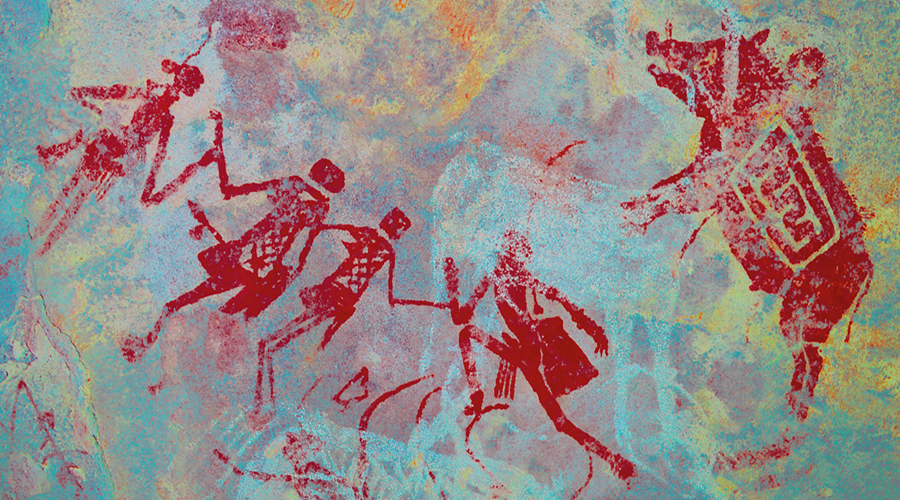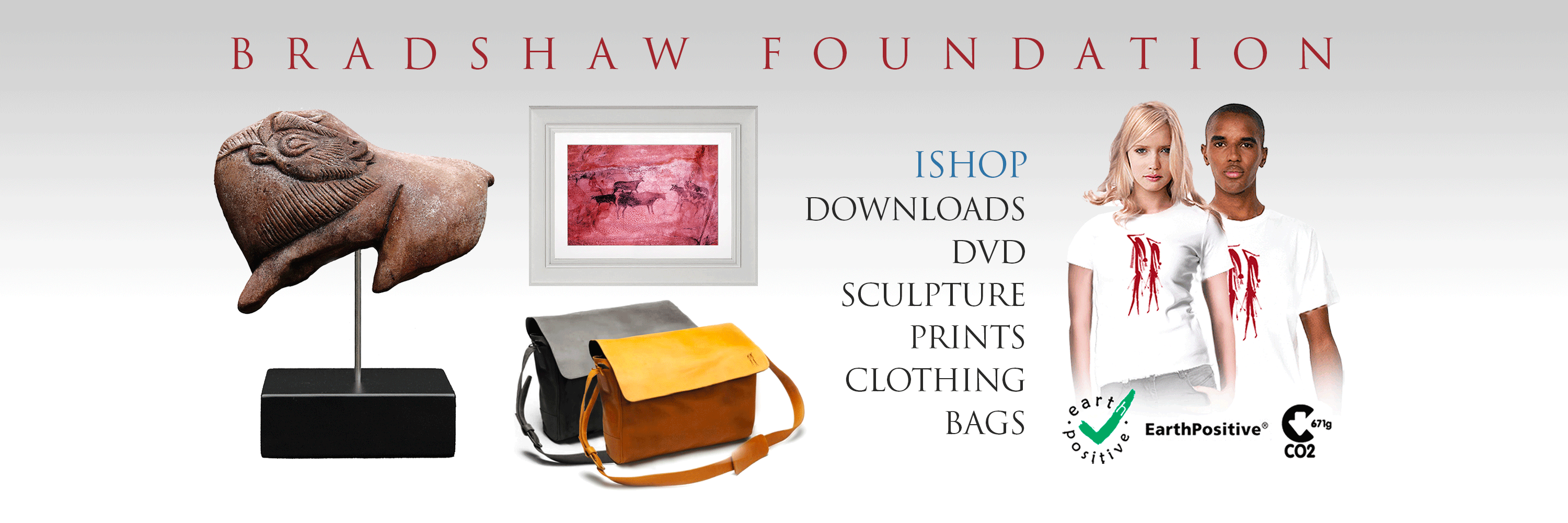


In southern Africa it is thought that ancestral San Bushmen were responsible for the majority of the rock art. This well-preserved panel of eland, located in the Drakensberg Mountains, is typical of such a painting tradition. Indeed, the Drakensberg is almost defined by the delicate and intricately painted eland.

As archaeologists, anthropologists and rock art researchers turned from a Western to a San view of the art, they realised that the eland was far more important in San culture than just a food animal. For the San, the eland was God's special animal, the one most filled with his magical power and potency. Even today, many San groups draw upon eland power in their rituals.
In this panel, the eland are shown in a variety of postures that seem to show a magical element in the art. Many of the eland are shown with knees bent and heads lowered. This is a dying posture. San ethnography tells us that the dying posture was a metaphor. San healers describe this happening during their trance dances. They say that they die in the dance; for them trance is a form of death, even if just a temporary death. The dying eland does not therefore only represent potency; it is also a metaphor for the dying dancer.
This panel is a fine example of a palimpsest, a canvas that is used again and again to paint and depict images, suggesting that the place and the process is as important as the painting itself.
The panel is located in the Eland Cave in the Ndedema Gorge - a Zula word for 'echoes of thunder' - in the Cathedral Peak area of Northern Drakensberg, and protected under the Cathedral Peak Special Conservation Area status, accessible only with a guide.
Visit our South Africa Rock Art Archive and the rock art of the San:
http://www.bradshawfoundation.com/south_africa/index.php
by Bradshaw Foundation
Monday 30 May 2022
by Bradshaw Foundation
Wednesday 19 January 2022
by Bradshaw Foundation
Thursday 06 January 2022
by Bradshaw Foundation
Monday 06 December 2021
by Bradshaw Foundation
Monday 29 November 2021
by Bradshaw Foundation
Monday 25 October 2021
by Bradshaw Foundation
Monday 12 July 2021
by Bradshaw Foundation
Monday 24 May 2021
by Bradshaw Foundation
Tuesday 20 April 2021
by Bradshaw Foundation
Thursday 01 April 2021
by Bradshaw Foundation
Tuesday 23 February 2021
by Bradshaw Foundation
Thursday 14 January 2021
by Bradshaw Foundation
Friday 18 December 2020
by Bradshaw Foundation
Sunday 06 December 2020
by Bradshaw Foundation
Thursday 26 November 2020
by Bradshaw Foundation
Wednesday 07 October 2020
by Bradshaw Foundation
Monday 30 May 2022
by Bradshaw Foundation
Wednesday 19 January 2022
by Bradshaw Foundation
Thursday 06 January 2022
by Bradshaw Foundation
Monday 06 December 2021
by Bradshaw Foundation
Monday 29 November 2021
by Bradshaw Foundation
Monday 25 October 2021
by Bradshaw Foundation
Monday 12 July 2021
by Bradshaw Foundation
Monday 24 May 2021
by Bradshaw Foundation
Tuesday 20 April 2021
by Bradshaw Foundation
Thursday 01 April 2021
by Bradshaw Foundation
Tuesday 23 February 2021
by Bradshaw Foundation
Thursday 14 January 2021
by Bradshaw Foundation
Friday 18 December 2020
by Bradshaw Foundation
Sunday 06 December 2020
by Bradshaw Foundation
Thursday 26 November 2020
by Bradshaw Foundation
Wednesday 07 October 2020
Friend of the Foundation











